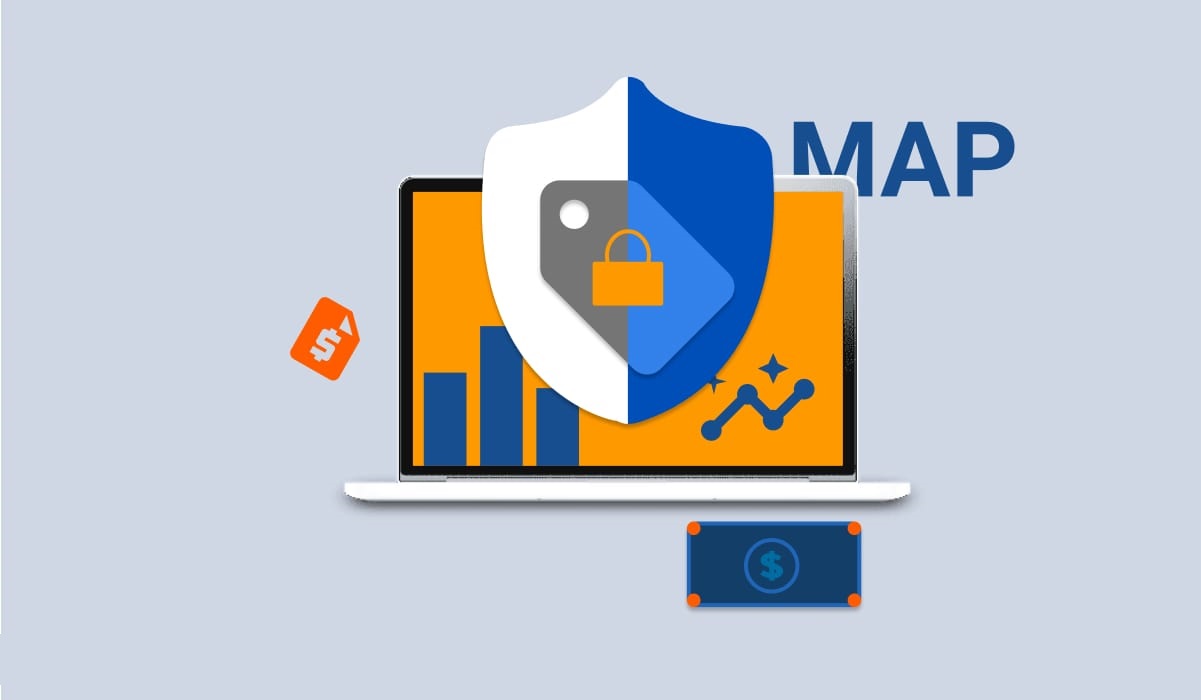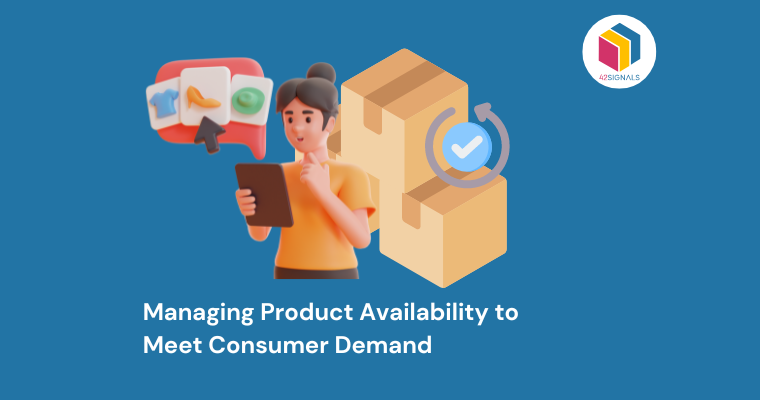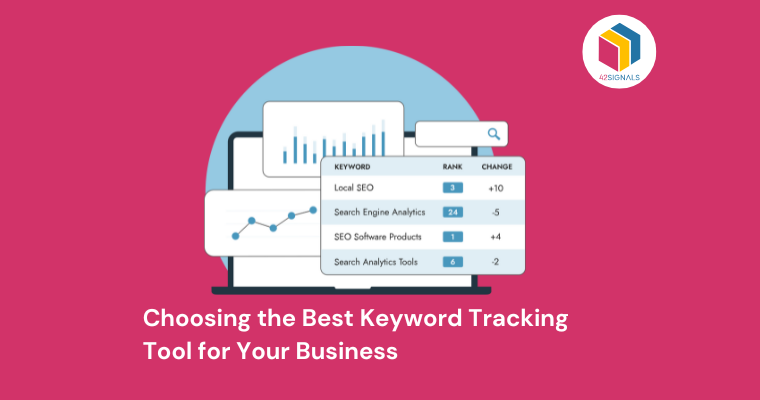Introduction
Maintaining a Minimum Advertised Price (MAP) policy is crucial for brands that want to maintain control over their pricing and brand image. However, enforcing MAP policies can be challenging, especially in the era of online marketplaces and resellers.
What is MAP Violation Software?

Image Source: Pricespider
MAP violations can have a significant negative impact on brands, leading to price erosion, loss of brand value, and damaged relationships with authorized retailers. To combat these violations effectively and efficiently, many brands are turning to MAP violation software.
Here’s an example: A cosmetics brand has a Minimum Advertised Price (MAP) policy in place to protect its pricing and brand reputation. They discover that an online retailer is advertising one of their products below the specified MAP.
To address this, the cosmetics brand uses MAP violation software, which quickly identifies the pricing violation. The software automatically sends a notification to the retailer, reminding them of the MAP policy and requesting a price adjustment.
The retailer receives the notification, acknowledges the violation, and promptly raises the product’s price to comply with the MAP policy. The cosmetics brand monitors this action through the software, ensuring that pricing consistency is maintained across its authorized retailers.
In this article, we will explore the concept of MAP violations, the impact they have on brands, and how MAP violation software can help tackle this issue.
Understanding MAP Violations
A Minimum Advertised Price (MAP) policy is a pricing strategy adopted by manufacturers to maintain a certain level of pricing integrity across their distribution channels. It acts as a safeguard to protect brand value and ensure fair competition among retailers.
MAP violations occur when retailers advertise or sell products below the minimum advertised price set by the manufacturer. These violations can happen both online and offline, making it increasingly difficult for brands to monitor and enforce their policies.
The Impact of MAP Violations on Brands
MAP violations can have detrimental effects on brands, affecting their reputation, sales, and relationships with authorized retailers. Here are some key impacts of MAP violations:
- Price Erosion: When unauthorized retailers consistently advertise products below the minimum price, it creates a perception of reduced value for the brand. This leads to a decline in the perceived worth of the product and can significantly affect brand equity.
- Loss of Brand Value: Consistent price undercutting erodes the perceived value of a brand, making it seem cheap or inferior. This undermines the efforts made by the brand to position itself as a premium or high-quality offering.
- Unfair Competition: MAP violations create an unfair playing field for authorized retailers who adhere to the pricing guidelines. Such violations provide unauthorized retailers with an unfair advantage, leading to resentment among authorized partners.
- Strained Relationships with Authorized Retailers: When authorized retailers notice MAP violations by other sellers, it damages their trust in the brand. Retailers may resent the brand for not taking appropriate action and feel uneasy about continuing their partnership, causing strain in the relationship.

Image Source: https://sciative.com/
How MAP Violation Software Works
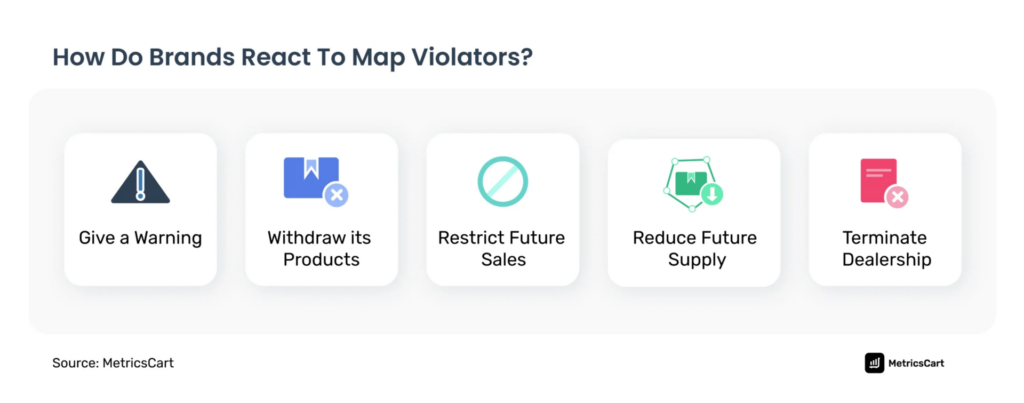
Image Source: MetricsCart
MAP violation software is designed to help brands easily identify instances of MAP violations across different online marketplaces and retailers. It uses advanced algorithms and data scraping techniques to monitor pricing data and advertisements across various platforms.
Here’s how MAP violation software typically works:
- Data Collection: The software collects pricing data from various online marketplaces and authorized retailer websites on a regular basis. It captures information such as product listings, prices, and promotional offers.
- Comparison and Analysis: The collected data is compared with the brand’s established MAP policy. The software identifies any instances where the advertised prices fall below the minimum advertised price set by the brand.
- Automated Alerts: The software sends automated alerts to the brand whenever a MAP violation is detected. These alerts can be customized based on predefined criteria, allowing brands to take proactive action against violators.
- Detailed Reporting: MAP violation software provides detailed reports and analytics, helping brands gain insights into the extent and frequency of violations. This data can be invaluable in identifying patterns and trends, allowing brands to refine their enforcement strategies.
Benefits of Using MAP Violation Software
Using MAP violation software offers several key benefits for brands seeking to enforce their MAP policies effectively. Here are some of the advantages:
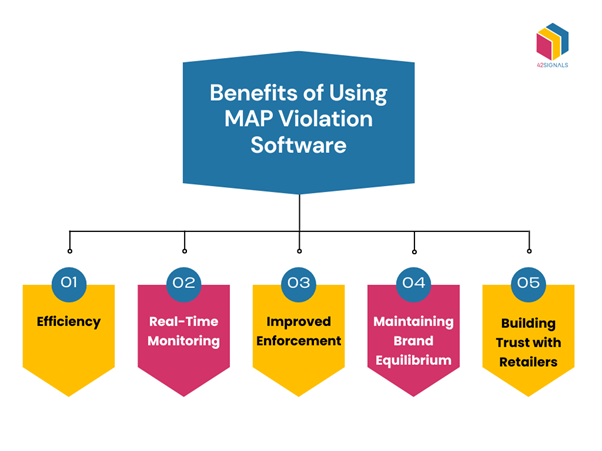
- Efficiency: Monitoring MAP violations manually can be a laborious and time-consuming process. MAP violation software automates this task, significantly reducing the effort required to identify and address violators.
- Real-Time Monitoring: MAP violation software constantly scans online marketplaces and websites, providing real-time data on pricing and advertisement compliance. This allows brands to quickly respond to violations and maintain control over their pricing.
- Improved Enforcement: With detailed reports and analytics, brands can identify repeat offenders and take appropriate action. This helps in creating a deterrent effect and preventing further violations.
- Maintaining Brand Equilibrium: By cracking down on MAP violations, brands can maintain a level playing field for their authorized retailers. This ensures fair competition and helps authorized partners thrive in the marketplace.
- Building Trust with Retailers: By actively enforcing MAP policies, brands demonstrate their commitment to their authorized retailers. This builds trust and strengthens the relationships, leading to more fruitful partnerships in the long run.
Conclusion
MAP violation software is a powerful tool that can assist brands in their efforts to crack down on infringements of their MAP policies. By using advanced algorithms, real-time monitoring, and automated alerts, brands can efficiently address violations, maintain brand value, and foster strong relationships with authorized retailers.
As MAP violations continue to be a challenge in the ever-growing e-commerce landscape, utilizing MAP violation software becomes an essential component in a brand’s overall enforcement strategy.
42Signals is one such tool that helps brands detect MAP violations promptly. To know more about our platform, email us at sales@42signals.com
Frequently Asked Questions
What is a MAP violation?
A Minimum Advertised Price (MAP) violation occurs when a retailer advertises a product at a price lower than the minimum price set by the manufacturer or supplier. This means that the retailer is essentially selling the product below the agreed-upon price floor, which can harm the brand’s reputation and undermine its pricing strategy.
What are the consequences of a MAP violation?
The consequences of a MAP violation can vary depending on the terms of the agreement between the manufacturer and the retailer. Some possible consequences include:
- Loss of authorization to sell the product
- Cancellation of orders or return of products
- Refusal to ship future orders
- Legal action, including fines or lawsuits
- Damage to the retailer’s reputation
- Loss of customer trust and loyalty
How do you enforce a MAP policy?
Enforcing a MAP policy typically involves monitoring retailers’ advertised prices and taking action when a violation occurs. Here are some steps that manufacturers can take to enforce their MAP policies:
- Clearly communicate the MAP policy to all authorized retailers, including the minimum advertised price and any applicable restrictions or exceptions
- Monitor retailers’ advertisements and websites regularly for compliance
- Use third-party monitoring services or software to automatically scan retailers’ websites for MAP violations
- Send warning letters or emails to retailers who violate the MAP policy, specifying the nature of the violation and requesting correction
- Impose penalties or sanctions on retailers who continue to violate the MAP policy, such as cancelling orders or suspending their authorization to sell the product
- Work with retailers to resolve any issues or disputes related to MAP violations
Does Amazon enforce MAP pricing?
Yes, Amazon does enforce MAP pricing for many products, especially those from well-known brands. Amazon has a policy called “Price Parity” that requires third-party sellers to maintain parity between their Amazon prices and their prices on other channels, including their own websites and physical stores. This means that if a seller lists a product on Amazon at a lower price than their MAP price, they may receive a notification from Amazon asking them to raise their price or face penalties. However, it’s worth noting that Amazon doesn’t always enforce MAP pricing for every product or seller, and some sellers may still choose to violate MAP pricing in hopes of gaining a competitive advantage.

